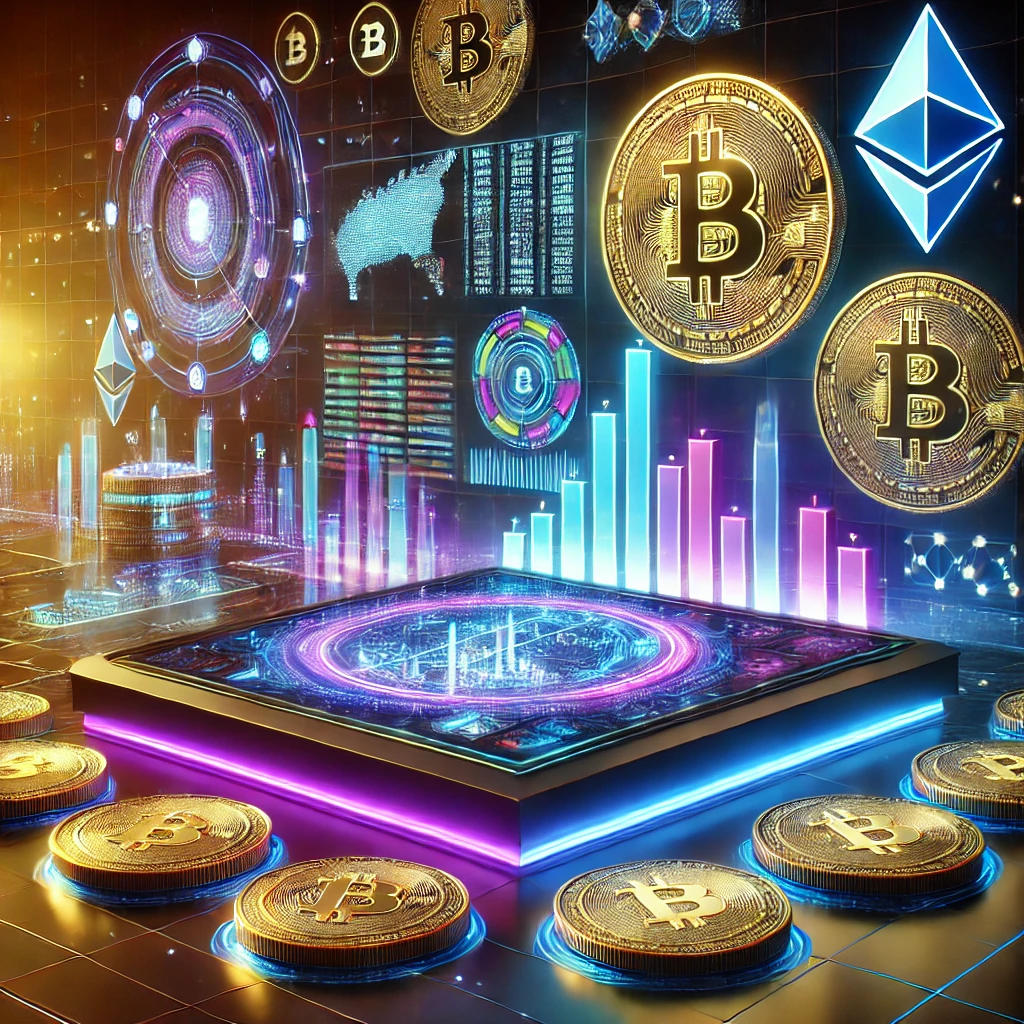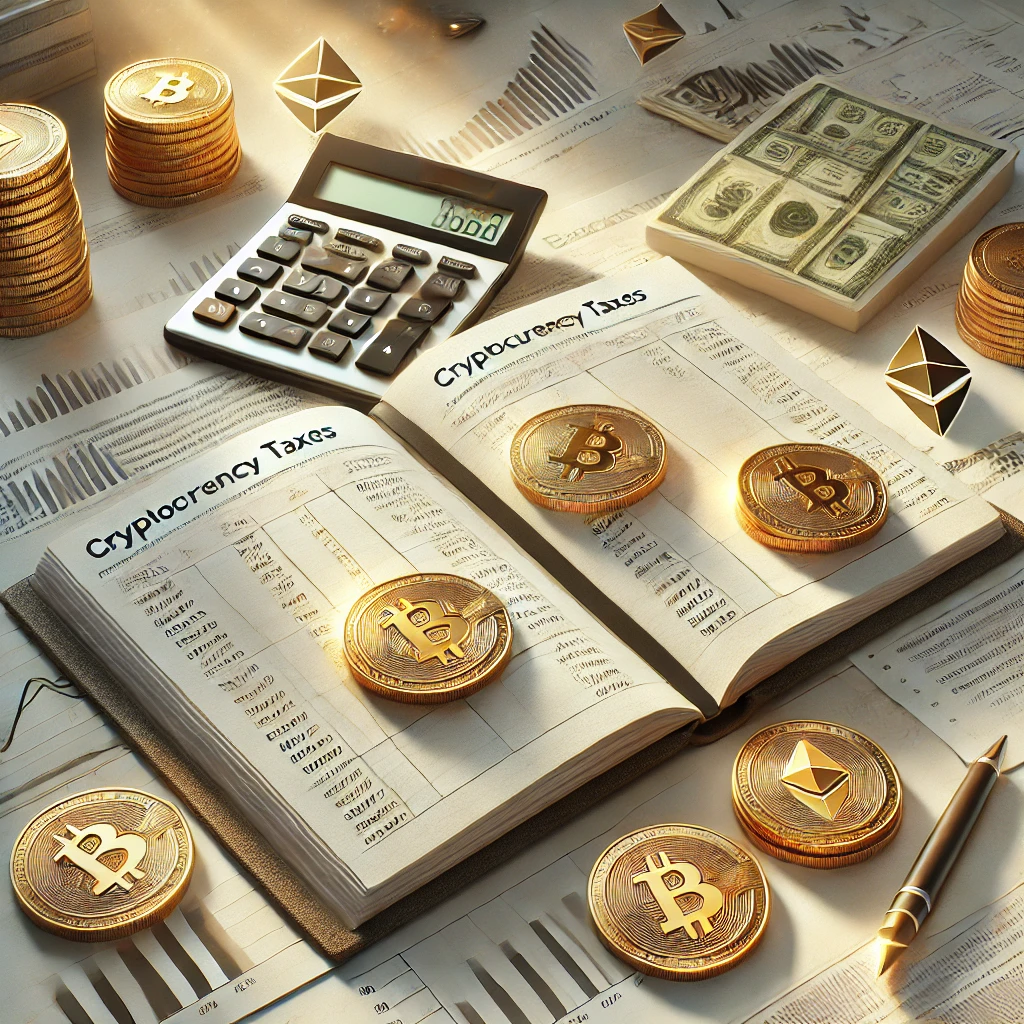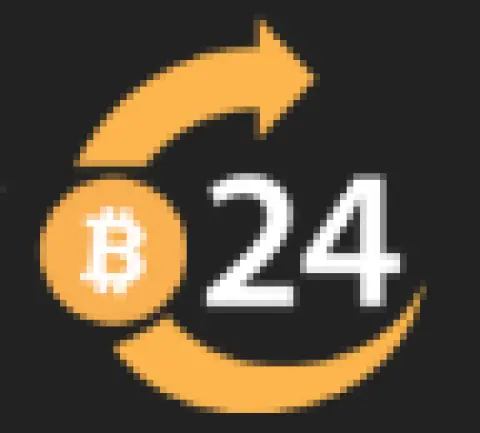Table of Contents:
Understanding Uniswap: A Beginner's Guide
Uniswap stands as a shining beacon in the world of cryptocurrency, providing a seamless platform for users to swap various digital assets. Its significance as a decentralized finance (DeFi) protocol cannot be overstated. Unlike traditional centralized exchanges, Uniswap operates on a model that allows for permissionless and automated transactions between users, which not only enhances user privacy but also ensures open access to anyone with a blockchain wallet.
The elegance of Uniswap lies in its simplicity. By leveraging liquidity pools rather than traditional market-making methods, it enables the exchange of crypto assets without the need for a dedicated intermediary, or market maker. When you engage in a trade on Uniswap, you're effectively interacting with a smart contract that holds reserves of both currencies involved in the transaction. Your trade is automatically balanced by an algorithm that adjusts the relative value of these cryptocurrencies.
- Uniswap is a decentralized protocol for direct P2P trading, allowing full control over funds.
- It allows for quick exchange of any ERC20 token.
- Users can add liquidity and receive trading fees as a reward.
- Based on the Ethereum blockchain, all transactions are transparent.
- Uniswap requires no registration or personal data, protecting user privacy.
This provider meets the editorial requirements for listing on this website. We are currently gathering experience with this provider and will publish it shortly.
This platform represents a radical shift from conventional exchange systems. It's founded on the principles of decentralization and user empowerment, both of which are at the heart of the DeFi movement. Uniswap doesn't just allow users to trade; it also enables them to contribute to liquidity pools. In return for providing liquidity, users receive fees generated from the trades in that pool, creating a compelling opportunity for passive income.
Understanding the fundamentals of Uniswap can be the first step towards diving into the expansive ocean of decentralized trading. It's a move from being a mere participant to becoming a contributor, shaping the liquidity and functionality of the platform. The innovation Uniswap brings to the table is transforming the DeFi landscape and is crucial for anyone looking to navigate this space effectively.
What is Uniswap and How Does it Work?
Uniswap is a decentralized exchange (DEX) that facilitates the swapping of cryptocurrencies without a centralized authority managing the process. By utilizing an innovative system known as an Automated Market Maker (AMM), Uniswap differs significantly from traditional exchange systems.
At the core of this AMM system are liquidity pools. These pools consist of pairs of tokens locked in a smart contract. Anyone with an Ethereum wallet can become a liquidity provider (LP) by depositing an equivalent value of each token in the pool. As compensation for providing liquidity and bearing the risks of price changes, LPs earn trading fees from the trades that occur in their pool—typically a small percentage of each transaction.
The workings of Uniswap are governed by deterministic algorithms. When someone wants to swap Token A for Token B, the Uniswap smart contract adjusts the price based on the relative supply of A and B in its pool. This price adjustment follows the formula x * y = k, where x and y represent the respective quantities of Token A and Token B in the liquidity pool, and k is a constant value. As the quantity of Token A is reduced and Token B is increased during a swap, the protocol automatically determines the new price to maintain the constant k.
Users interact directly with the smart contract from their Ethereum wallets using a Web3 interface. They don't need to create an account or undergo any KYC (Know Your Customer) process, thereby maintaining privacy and security. Gas fees, which are required for Ethereum transactions, apply to trades on Uniswap and may vary depending on network congestion.
The brilliance of Uniswap lies in its facilitation of efficient, trustless, and decentralized trading, a true innovation in today's digital asset exchanges.
Comparative Analysis of Uniswap's Strengths and Weaknesses
| Pros | Cons |
|---|---|
| Decentralized and permissionless | Exposure to impermanent loss |
| Automated liquidity provision | High gas fees on the Ethereum network |
| Open-source software | Vulnerability to smart contract bugs |
| Uniswap version 3 offers concentrated liquidity | Complex interface for new users |
| Large user and developer community | Potential for price slippage |
| Integration with other DeFi protocols | Regulatory uncertainty |
The Technology Behind Uniswap: Automated Market Making
The beating heart of Uniswap's technology is its Automated Market Making (AMM) system. Central to this AMM is the constant product formula, defined as x * y = k. A user's trade shifts the reserves of the tokens in the pool and the price is adjusted accordingly to ensure that the product of the reserves remains equal to k. This constant equation allows the Uniswap protocol to price assets and facilitate trades instantly without an order book.
One of the key features of an AMM like Uniswap is that pricing is determined by an algorithm instead of order-driven market dynamics seen in typical exchanges. Traditional exchanges rely on buyers and sellers to create a market; AMMs, however, simply require a pool of tokens and the smart contracts handle the entirety of the trade cycle.
The AMM eliminates the need for matched buyers and sellers, resulting in a system where trades can occur at any time with the liquidity available in pools. It also mitigates problems of low liquidity that can plague smaller assets on traditional exchanges. Thanks to this technology, assets with differing degrees of popularity can be traded with ease, potentially reducing slippage and promoting a more vibrant and diverse trading environment.
Understanding AMM is vital for potential liquidity providers and traders alike. The automation and the underlying smart contracts ensure unbiased and consistent trade processing, establishing a trustless environment where the code dictates the rules—a dramatic change from the opaque and subjective human-managed systems of yesterday.
Automated Market Making is not just a technological shift, it is a paradigm change in asset trading that empowers users and redefines their interaction with financial markets.
Getting Started with Uniswap: Setting Up Your Wallet
To participate in Uniswap, the first essential step is setting up a digital wallet compatible with the Ethereum blockchain. There are several wallet options available, each with unique features, security elements, and ease-of-use considerations. Popular choices include MetaMask, Trust Wallet, and Coinbase Wallet, among others. These wallets not only store your cryptocurrency securely but also allow you to interact with decentralized applications (dApps) like Uniswap directly.
Setting up a wallet typically involves the following steps:
- Choose a wallet service and install it as a browser extension or mobile app.
- Follow the setup instructions, which include creating a new wallet and backing up your private key or seed phrase securely. This key or phrase is essential for accessing your funds, and losing it may result in losing access to your cryptocurrencies.
- Ensure your wallet is funded with some Ethereum (ETH), which you'll need to pay for transaction fees on the Ethereum network. These fees are known as 'gas', and the amount required can fluctuate based on network demand.
- Connect your wallet to Uniswap by visiting the Uniswap interface and clicking on the 'Connect Wallet' button. Your wallet extension or app will prompt you to grant permission for Uniswap to view your balances and initiate transactions.
Once connected, your wallet serves as your passport to the Uniswap ecosystem, where you can trade, provide liquidity, and even participate in governance if you hold Uniswap's governance token, UNI.
Remember to exercise caution and never share your private key or seed phrase with anyone. The security of your funds rests in the integrity of these credentials.
In summary, the entry point to Uniswap's decentralized trading platform is an Ethereum-compatible wallet. Choose wisely, prioritize security, and you will hold the key to a new realm of financial empowerment.
How to Trade on Uniswap: A Step-by-Step Tutorial
Trading on Uniswap is designed to be straightforward and user-friendly. Once you have your wallet set up and connected, follow these steps to initiate and complete a trade:
- Navigate to the Uniswap interface. Here, you will find the option to select the tokens you wish to swap in the trading section.
- In the dropdown menus, choose the token you want to trade from and the token you want to receive. If the token you’re looking for doesn’t appear, you can paste its contract address directly into the search bar.
- Enter the amount of the token you are trading or the amount of the token you want to receive. The Uniswap interface will automatically calculate the other value based on current market rates.
- Before confirming, review the transaction details. Uniswap will display the expected output, price impact, liquidity provider fee, and the current gas cost.
- If everything looks correct, click on the "Swap" button. Your wallet will ask you to confirm the transaction and will show the estimated gas fee.
- Once you approve the transaction and the gas fee, Uniswap’s smart contract will process your trade. The swap will then be mined on the Ethereum blockchain, which can take from a few seconds up to several minutes depending on network congestion.
- After the transaction is confirmed, the new tokens will be deposited into your wallet. You can check your wallet’s balance to see the updated token amount.
The trading process is facilitated by the underlying smart contracts that run the AMM—requiring no order books or third parties. This autonomy is part of what makes Uniswap a unique and empowering trading experience.
Be aware of market conditions, as high demand on the Ethereum network can lead to increased gas fees—sometimes significantly so. Additionally, slippage can occur during periods of high volatility, which might affect the final amount received from a trade.
Taking the plunge into Uniswap trading might seem daunting at first glance, but by following these steps, you can embark on your decentralized trading journey with confidence and ease.
Uniswap's UNI Token: Utility and Value
The native token of the Uniswap platform, UNI, is more than just a digital currency. It embodies both utility and governance roles within the Uniswap ecosystem. UNI token holders have the distinct privilege of participating in the governance of the protocol. This means they can propose changes, debate on platform developments, and vote on proposals that influence Uniswap's future direction.
From a utility standpoint, UNI can be used to:
- Create and vote on governance proposals once a minimum threshold of tokens is held.
- Contribute to and gain a say in how the Uniswap treasury is allocated.
- Influence the fee switch and other system parameters, potentially earning a portion of transaction fees if the fee switch is ever activated.
In terms of value, UNI tokens have intrinsic value as they reflect the success of the Uniswap platform. As more users engage with the platform and utilize its services, the more valuable the governance rights of the token become. The value of UNI is not just in potential market price appreciation but also in the empowerment of its holders to steer the protocol.
UNI tokens represent a stake in one of the pioneering projects of the DeFi space, with a user-driven approach to decentralization and innovation.
UNI's distribution was initially set through a historic airdrop to early users of the platform, which not only rewarded long-time supporters but also decentralized the ownership and governance of the protocol from day one. Subsequent acquisition can be via trading on Uniswap and other exchanges or through liquidity mining rewards if available.
The presence of UNI tokens underscores the collaborative nature of Uniswap, inviting users to take an active role in the growth and resilience of both the platform and the wider DeFi landscape.
Comparing Uniswap with Other Decentralized Exchanges
Uniswap sets itself apart in the DeFi arena but faces competition from a variety of other decentralized exchanges (DEXs). When examining the differences between Uniswap and its peers, there are several factors to consider:
- Liquidity: Uniswap is renowned for its high liquidity, a direct result of its large user base and incentivized liquidity provision. Other DEXs may not match this level, affecting their trade execution quality.
- User Interface (UI): Uniswap's UI is praised for its simplicity and ease of use. Competitors vary in this regard, with some offering more complex features that might cater to advanced users.
- Fees: Transaction fees can be a determining factor for users when choosing a DEX. Uniswap fees are a flat rate of 0.3% per trade, whereas other platforms may have different fee structures.
- Smart Contract Efficiency: The efficiency of the smart contracts underpinning a DEX affects transaction costs and speed. Uniswap's V3 has introduced concentrated liquidity, making it more capital-efficient.
- Token Variety: Some DEXs may offer a wider range of tokens, including those not available on Uniswap, catering to users seeking niche markets.
- Additional Features: Certain DEXs may offer extra features such as lending, borrowing, and yield farming. Uniswap focuses on its primary service, the AMM, for superior trade execution.
Uniswap's main competitors include platforms like SushiSwap, which originated as a fork of Uniswap, adding features like community governance and on-chain earning opportunities. There's also Curve Finance, tailored for trading stablecoins with low slippage, and Balancer, a platform allowing for custom liquidity pools with multiple tokens.
In sum, Uniswap maintains its lead in the DEX space through its liquidity, accessible design, and efficient automated market making. However, depending on a user's needs, other platforms may offer something that better fits their trading strategy or investment goals.
The Role of Liquidity Pools in Uniswap
Liquidity pools play a pivotal role in Uniswap's ecosystem, acting as the foundation upon which the Automated Market Maker (AMM) system operates. These pools, essentially composed of funds locked in a smart contract, enable traders to swap tokens without the need for a traditional buyer or seller on the other side of the trade.
Each liquidity pool contains a pair of ERC-20 tokens. For a trade to occur, it must affect the token balances in such a way as to keep the product of their quantities constant. This is expressed by the formula x · y = k, where x and y represent the quantity of each token in the pool, and k remains a fixed constant.
The advantages of liquidity pools include:
- Eliminating the need for an order book, allowing for immediate trades.
- Providing a mechanism for price discovery without requiring large numbers of active traders at all times.
- Enabling liquidity providers to earn passive income from trade fees based on their share of the pool.
However, serving as a liquidity provider does entail risks, such as impermanent loss, which occurs when the price of tokens changes compared to when they were deposited into the pool. It is a risk resulting from the AMM's price-adjusting mechanism designed to maintain the constant k.
In conclusion, liquidity pools are the backbone of Uniswap's trading model, creating a decentralized platform where tokens can be traded around the clock with the assurance of liquidity and without relying on traditional market-making entities.
Uniswap Fees Explained: Costs and Rewards
When trading on Uniswap, users incur certain fees, which serve as both a cost for traders and a reward for liquidity providers. The primary fee to be aware of is the trading fee, which is typically set at 0.3% of the trade amount. This fee is split among the liquidity providers of the pool proportionally to their share.
The fee structure is designed to incentivize liquidity provision, which is essential for the AMM model to function effectively. For a liquidity provider, these fees represent a reward for supplying capital to the market and bearing the associated risks, such as impermanent loss.
Besides the trading fees, there are also network fees, commonly known as gas. These are not specific to Uniswap but are necessary for any transaction on the Ethereum blockchain. The gas prices are determined by the complexity of the transaction and the current demand on the network.
It's important to understand that:
- The trading fee is a one-time cost paid by the trader when a transaction is executed.
- The gas fee is paid to Ethereum network miners for processing and validating transactions and can fluctuate widely.
For liquidity providers, the equation for rewards from fees is:
Earnings = (Pooled Tokens · Individual Share · 0.3%) / Trade Volume
The seamless integration of fees into Uniswap's protocol means that traders can quickly execute trades, while liquidity providers are automatically compensated for the essential role they play in maintaining the platform's liquidity and functionality.
Uniswap Governance: How Users Shape the Platform
Uniswap epitomizes the decentralized ethos of cryptocurrency by giving its community the power to directly influence the governance of the protocol. UNI token holders are granted the authority to propose, vote on, and implement changes that impact the direction and functionality of the platform.
This democratic process ensures that Uniswap remains aligned with the wants and needs of its users. Governance proposals can span a wide range of issues, including but not limited to:
- Protocol upgrades and feature implementations
- Changes to fee structures
- Integration of new tokens or liquidity pools
- Decisions regarding the Uniswap community treasury funds
The governance process typically follows these steps:
- A proposal is put forward by a UNI holder with a minimum threshold of delegated votes.
- The Uniswap community discusses and debates the proposal.
- If there is sufficient consensus, a vote is held.
- Token holders cast their votes within a specific timeframe, with each UNI representing one vote.
- For a proposal to pass, it must meet quorum requirements and achieve a majority decision.
"Governance by the consensus of the many rather than the will of the few ensures that Uniswap continuously evolves in a manner that serves its diverse user base."
Through this governance model, Uniswap harnesses the collective intelligence and perspective of its stakeholders. It not only fosters a sense of ownership among participants but also promotes an environment conducive to innovation and continuous improvement.
Security Measures and Risks of Using Uniswap
As with any platform in the decentralized finance space, security is paramount. Uniswap employs several measures to protect its users and their assets, but it's vital for users to be aware of both the protective steps taken by the platform and the existing risks.
Key security measures in place on Uniswap include:
- Smart contract audits conducted by reputable third-party companies to help identify and correct vulnerabilities.
- A decentralized architecture, which reduces the risk of server downtime and centralized data breaches.
- The use of Immutable smart contracts, where the code cannot be changed post-deployment, ensuring consistency and reliability of transactions.
Despite these measures, Uniswap-like any other platform operating on the blockchain-cannot guarantee absolute security and users should be cognizant of potential risks:
- Smart Contract Vulnerabilities: While audited, smart contracts can still contain bugs or vulnerabilities that may be exploited.
- Impermanent Loss: As a liquidity provider, the risk of impermanent loss where the value of deposited assets changes compared to when they were deposited can result in potential financial loss.
- Phishing Attacks: Users must be vigilant against phishing attempts where malicious parties try to obtain access to private keys or wallet information.
To mitigate these risks, users should:
- Always perform transactions through the official Uniswap interface and verify that the URL is correct.
- Keep private keys and seed phrases secure and never disclose them. Hardware wallets can offer additional security.
- Understand and review transactions before approval, staying alert for any signs of suspicious activity.
"While Uniswap strives to provide a secure, trustless environment, users should exercise due diligence and educate themselves on both operating procedures and involved risks."
Ultimately, the security of one's assets in the DeFi space hinges on both the robustness of the platform's measures and the conscientious practices of the individual user.
Uniswap's Impact on the DeFi Ecosystem
Uniswap's arrival has heralded a remarkable shift in the DeFi ecosystem, with its innovative protocol catalyzing the decentralization movement. The AMM model and liquidity pools that Uniswap introduced now serve as the blueprint for numerous emerging DEXs, aiming to replicate its success.
The platform's ability to provide equal access to liquidity and trading opportunities has made it a central pillar of the DeFi space, leveling the playing field for individuals who may not have had access to traditional financial systems. Uniswap has shown that efficient, automated trading is not only possible but also highly scalable without the need for centralized intermediaries.
Moreover, Uniswap's influence extends to:
- Promoting innovation in liquidity strategies, with the concept of concentrated liquidity introduced in V3.
- Enhancing transactional efficiency and reducing slippage through smarter routing algorithms.
- Setting benchmarks for governance models that empower users.
Uniswap has also indirectly stimulated competition within the DeFi landscape, encouraging other platforms to improve their services and innovate. This competition is pushing the boundaries of what is possible in smart contract design, governance, and overall platform functionality.
"Uniswap's model and philosophy have served as a catalyst, inspiring a wave of innovation and growth within the DeFi ecosystem."
The widespread adoption of Uniswap's foundational concepts underscores its seminal role as a standard-bearer in the DeFi industry. It illustrates the potential for decentralized governance to recalibrate financial power dynamics and usher in a new era of financial democratization.
Future Developments: What's Next for Uniswap?
As a leading figure in the DeFi space, Uniswap is poised to continue its trajectory of growth and innovation. Looking ahead, Uniswap is expected to further iterate on its successful formula, introducing new features and enhancements that could redefine the future of decentralized trading.
Potential areas of development include:
- Advancements in layer 2 scaling solutions, which could drastically reduce gas fees and improve transaction speeds, making the platform even more accessible and cost-effective.
- Integration of cross-chain functionality to allow for seamless swaps between a broader range of cryptocurrencies, including those outside the Ethereum ecosystem.
- Continued work on liquidity management strategies to mitigate the risk of impermanent loss for liquidity providers.
- Further decentralization of its governance structure, potentially shifting more power and control to the community of UNI token holders.
Additionally, as DeFi becomes more mainstream, Uniswap may play an integral role in the development of regulatory frameworks that could pave the way for even wider adoption.
"The ambition of Uniswap is not just to maintain its status quo but to evolve and adapt, setting new standards for DeFi platforms worldwide."
While the specifics of future updates remain under wraps, the ethos of Uniswap suggests a commitment to optimization and user-centric improvements. Indeed, the collaborative nature of the platform's governance ensures that its trajectory will align with the desires and needs of its community.
In conclusion, Uniswap will likely continue to be a bellwether in the DeFi space, steering the conversation and innovation in decentralized finance while fostering a community-driven environment.
Maximizing Your Trades on Uniswap: Tips and Strategies
Trading on Uniswap can be an engaging and potentially profitable experience if approached with the right strategies. Here are some tips to help maximize the effectiveness of your trades on the platform:
- Stay informed about the latest developments in the Uniswap ecosystem, including updates to the protocol or the introduction of new liquidity pools that could offer attractive trading opportunities.
- Monitor the gas prices on the Ethereum network to execute trades when transaction fees are lower, which can significantly impact the cost-effectiveness of trades.
- Understand the concept of slippage and adjust the slippage tolerance in your trade settings accordingly, especially when dealing with large orders or highly volatile tokens.
- Consider becoming a liquidity provider to earn a share of transaction fees, but be aware of the risks, particularly impermanent loss.
- Use technical analysis and other market analysis tools to inform your trading decisions, as you would with any other trading platform.
Furthermore, take advantage of the governance process to support proposals that could benefit the platform's performance and, consequently, your trading strategy.
"Sound strategies and timely execution are key to making the most of Uniswap's potential as a decentralized trading platform."
Keeping these tips in mind, Uniswap users can refine their approach to navigating this innovative platform, reducing risks and improving the potential for rewarding trades.
Conclusion: Why Uniswap Matters for Crypto Traders
Uniswap has undoubtedly left an indelible mark on the DeFi landscape, shaping the way crypto traders engage with the market. Its contribution to the growth of decentralized trading systems has laid the groundwork for an innovative, accessible, and more democratic financial framework.
The platform's automated market-making model facilitates fluid, continuous, and permissionless trading, empowering individuals to trade without the need for traditional market makers. By utilizing liquidity pools and the constant product formula x · y = k, Uniswap enables efficient and straightforward asset exchange, and offers liquidity providers the opportunity to earn passive income.
Moreover, Uniswap's governance token, UNI, vests power in the hands of its users, allowing them to directly impact the protocol's development. With Uniswap, governance goes beyond mere token ownership; it encompasses active participation in the platform's future.
"In the rapidly evolving world of cryptocurrency, Uniswap stands out as a testament to the transformative power of DeFi. It not only enables seamless asset exchange but also embodies the principles of decentralization and user empowerment."
To conclude, Uniswap matters for crypto traders because it exemplifies the potential of blockchain technology to create self-sustaining financial ecosystems that are transparent, inclusive, and secure. As the platform continues to evolve and adapt to meet the changing needs of its users, its relevancy and influence within the realm of cryptocurrency trading is poised to only grow stronger.
- Uniswap is a decentralized protocol for direct P2P trading, allowing full control over funds.
- It allows for quick exchange of any ERC20 token.
- Users can add liquidity and receive trading fees as a reward.
- Based on the Ethereum blockchain, all transactions are transparent.
- Uniswap requires no registration or personal data, protecting user privacy.
This provider meets the editorial requirements for listing on this website. We are currently gathering experience with this provider and will publish it shortly.
Uniswap Explained: Essential FAQs for Understanding the DEX Platform
What is Uniswap and how does it work?
Uniswap is a decentralized exchange (DEX) that utilizes Automated Market Maker (AMM) technology to enable the swapping of cryptocurrencies without a centralized authority. It employs liquidity pools, which consist of pairs of tokens locked in a smart contract, to facilitate trades and maintain liquidity.
How can I become a liquidity provider on Uniswap?
Anyone with an Ethereum wallet can become a liquidity provider by depositing an equivalent value of each token in a Uniswap liquidity pool. In exchange for providing liquidity and assuming the risks of price fluctuations, providers earn trading fees from the transactions occurring within their pool.
What are Uniswap’s main features and advantages?
Uniswap's main features include decentralized and permissionless trading, automated liquidity provision, and integration with other DeFi protocols. Its advantages include an open-source software, a large user base, and the ability for users to earn fees by providing liquidity to the pools.
What is the UNI token and what is its purpose within the Uniswap ecosystem?
The UNI token is Uniswap's native governance token, which grants holders the right to participate in making decisions about the protocol's development and future. UNI holders can propose, vote on governance proposals, and influence the platform’s fee structures and treasury fund allocation.
How does Uniswap’s Automated Market Maker model differ from traditional exchanges?
Uniswap's AMM model removes the need for order books and matched buyers and sellers typical of traditional exchanges. Instead, it relies on liquidity pools and a constant product formula, allowing for immediate trades and price discovery, and providing an efficient and decentralized trading experience.













